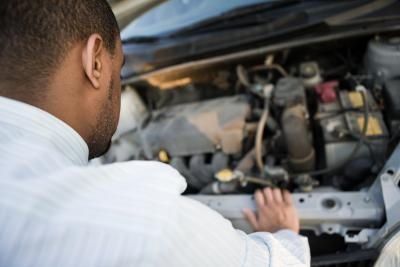
The Chevrolet 427-cubic-inch big block V-8 is a popular engine for muscle car owners looking to provide the big torque numbers that only a large-displacement, big-block V-8 can provide. The 427 was a popular engine originally offered by GM in the 1960s in the Corvette, in a mild form (the L36) and a high-performance version (the L72), later joined by L89 and L88 variants. The 427 was replaced by the 454-cubic-inch motor in 1970.
Use an engine hoist (also called a cherry picker) to remove the 427 from your car and ready it for your buildup. If you do not have a 427, you can either source an old 427 from a junkyard or an older Chevy car, or purchase a new, aftermarket block, such as the Dart Big M iron block, or the aluminum block variant which will provide weight savings. Sourcing an old junkyard motor can save you money, but will require servicing from a machine shop. At the minimum, a used block will need to be cleaned and inspected, and possibly re-bored if there has been any block cylinder wall damage or excessive wear. Note that due to the rectangular port head, solid lifter camshaft, and extremely strong bottom-end, the L72 is an extremely desirable used big-block, which commands a price premium.
Assemble bottom-end components. If you have sourced a used engine, a qualified machine shop can perform a general restoration of the bottom-end components, including cleaning the crankshaft, rods, and pistons by shot-peening, and media blasting these units to restore full functionality. This would minimize the cost of a 427 build, since you are using the stock components. Where this is not possible due to damage, or if you are starting with a fresh block, several aftermarket companies offer camshaft, rods and piston sets to match your power goals.
Build heads and supporting systems. The heads will be critical to maximizing power on a 427. Companies like Dart make well-regarded 427 engine heads, which contain many modern improvements in flow design over vintage 427 heads, and will work with the stock bottom-end rotating assembly. If your heads are being built by a shop, be sure to have them flow tested to get an accurate idea of airflow capacity for these heads. Top the heads with a dual-plane intake manifold, along with a high-flow carburetor to provide air, and a high-flow oil pump and fresh injectors to provide fuel.
Tune your engine. It is not good enough to merely install a variety of parts, because without tuning, you can cause dangerously lean conditions which will destroy the engine in short order. Once assembled, have the motor tuned by a competent shop that has experience in tuning performance engines.